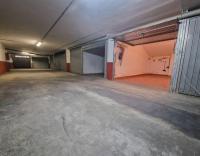Spain teaches how to revamp buildings through green renovation techniques Spain has announced plans to renovate 2.2 million dwellings by 2020 According to the European Directive 27/2012, all EU members are obliged to adopt a long-term national strategy to enhance investments for the renov ...
Spain teaches how to revamp buildings through green renovation techniques
Spain teaches how to revamp buildings through green renovation techniques
Spain has announced plans to renovate 2.2 million dwellings by 2020
According to the European Directive 27/2012, all EU members are obliged to adopt a long-term national strategy to enhance investments for the renovation of both public and private residential and commercial buildings.
Spain has already adopted a national plan for building regeneration. Peter Sweatman – the founder of Climate Strategy & Partners – has illustrated the approach taken by Spain to the Green Building Council Italia, which has been promoting Leed Certification for years. After an accurate analysis of the Spanish real estate scene, an international team of experts and advisors has set aims and objectives to be achieved by 2020: adjust housing units to standards; lower costs and reduce the impact on the environment; create new jobs. The strategy has been focused on three segments: rural areas, province and town. A list of priorities has been drawn up on the basis of the maintenance conditions, architectural characteristics and initial socio-economic conditions in order to establish which buildings need most urgent interventions.
Renovation works will be undertaken on 25 million residential buildings in Spain, 74% of which were built before 2001. As the years go by, the plan is improved and the effects of building regeneration can be assessed on the basis of the change of energy and renovation costs. By doing this, it is possible to give sure data to long-term investors. To sum up, Spain is committed to take actions on 2.2 million dwellings by 2020 reducing energy consumption by 24% through 64 billion investments.
During the first years, the saving will amount to 3 euros per invested euro, but it is expected to rise to 4 euros per invested euro. The launching of the project needs the support of the 2014-2020 European funds, then it will become an autonomous market. The national strategy will need to be updated every three years.
In order to promote urban regeneration and environmental improvements, citizens must change the way they think about how buildings are designed, constructed and maintained. A sustainable future can be granted to cities and towns only adopting cost-efficient and energy-saving measures. Private and institutional investments can be boosted by issuing green building certificates. The USA, China and the United Arab Emirates are on the top three positions in the list of the 12 countries in the world undertaking the highest number of green renovation projects.
Main source: IlSole24Ore
Read also:
Related Insights
-
Spain teaches how to revamp buildings through green renovation techniques
Real Estate Listings
For sale 2 Bedrooms, Spain, Alicante, Torrevieja, .

For sale
2 Bedrooms
56 m²
For sale 3 Bedrooms, Spain, Alicante, Torrevieja, .

For sale
3 Bedrooms
58 m²
For sale 2 Bedrooms, Spain, Alicante, Torrevieja, .

For sale
2 Bedrooms
83 m²
For sale 2 Bedrooms, Spain, Alicante, Torrevieja, .

For sale
2 Bedrooms
60 m²
For sale 2 Bedrooms, Spain, Alicante, Torrevieja, .

For sale
2 Bedrooms
60 m²
For sale 2 Bedrooms, Spain, Alicante, CALLE MALDONADO, .

For sale
2 Bedrooms
65 m²
For sale 2 Bedrooms, Spain, Alicante, Orihuela Costa, .

For sale
2 Bedrooms
65 m²
For sale 2 Bedrooms, Spain, Alicante, Alicante, Calle Bahia 163

For sale
2 Bedrooms
75 m²
For sale House, Spain, Tarragona, Mont-Roig del Camp, CALLE GRAN CANARIA 66

For sale
House
600 m²

